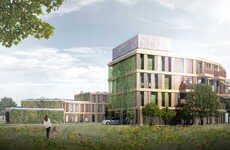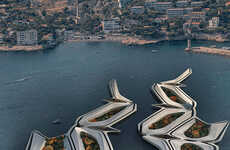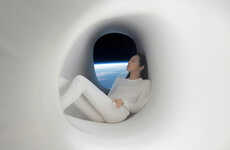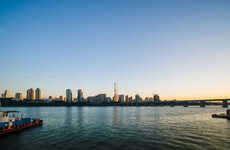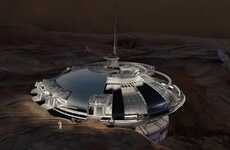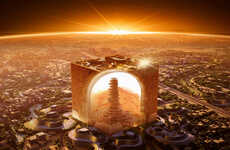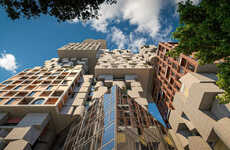
Project ZERO Maximizes Living Space with a Sphere-Like Shape
Skyscrapers solve the problem of limited surface area in metropolises, yet they often result in cramped living quarters for their inhabitants; Project ZERO addresses this issue by not only building upwards, but outwards too. The concept, designed for Hong Kong, is roughly spherical in shape, such that only a small portion makes contact with the city yet a massive bubble rises into the sky.
Project ZERO is ambitious: it measures in at 700 meters tall and 700 meters wide. To put that size into perspective, it would be the equivalent of slightly more than two Eiffel Towers stacked vertically and two more stacked horizontally.
The concept will not be entirely covered by material. Instead, two "skeletons" carry the majority of the vertical and horizontal loads. Since Project ZERO presents so much more living space than standard skyscrapers, it will also include a massive "sky garden" towards the top of the sphere.
Project ZERO is ambitious: it measures in at 700 meters tall and 700 meters wide. To put that size into perspective, it would be the equivalent of slightly more than two Eiffel Towers stacked vertically and two more stacked horizontally.
The concept will not be entirely covered by material. Instead, two "skeletons" carry the majority of the vertical and horizontal loads. Since Project ZERO presents so much more living space than standard skyscrapers, it will also include a massive "sky garden" towards the top of the sphere.
Trend Themes
1. Spherical Skyscrapers - Opportunity for innovative architectural designs and solutions that optimize living space in densely populated areas.
2. Vertical Expansion - Emerging trend of maximizing space by constructing buildings that stack vertically, offering increased capacity and functionality.
3. Sky Gardens - Growing popularity of incorporating green spaces in high-rise buildings to enhance livability and promote environmental sustainability.
Industry Implications
1. Architecture - Disruptive innovation opportunities exist for architects and urban planners to create unconventional building designs that address urban density challenges while maintaining livability and aesthetic appeal.
2. Construction - Construction industry can explore innovative construction techniques and materials to support the development of spherical skyscrapers and vertical expansion projects, enabling efficient and sustainable urban development.
3. Real Estate - Real estate developers can capitalize on the trend of sky gardens and spherical skyscrapers to create unique selling points and attract environmentally conscious and forward-thinking buyers or tenants.
5.8
Score
Popularity
Activity
Freshness

